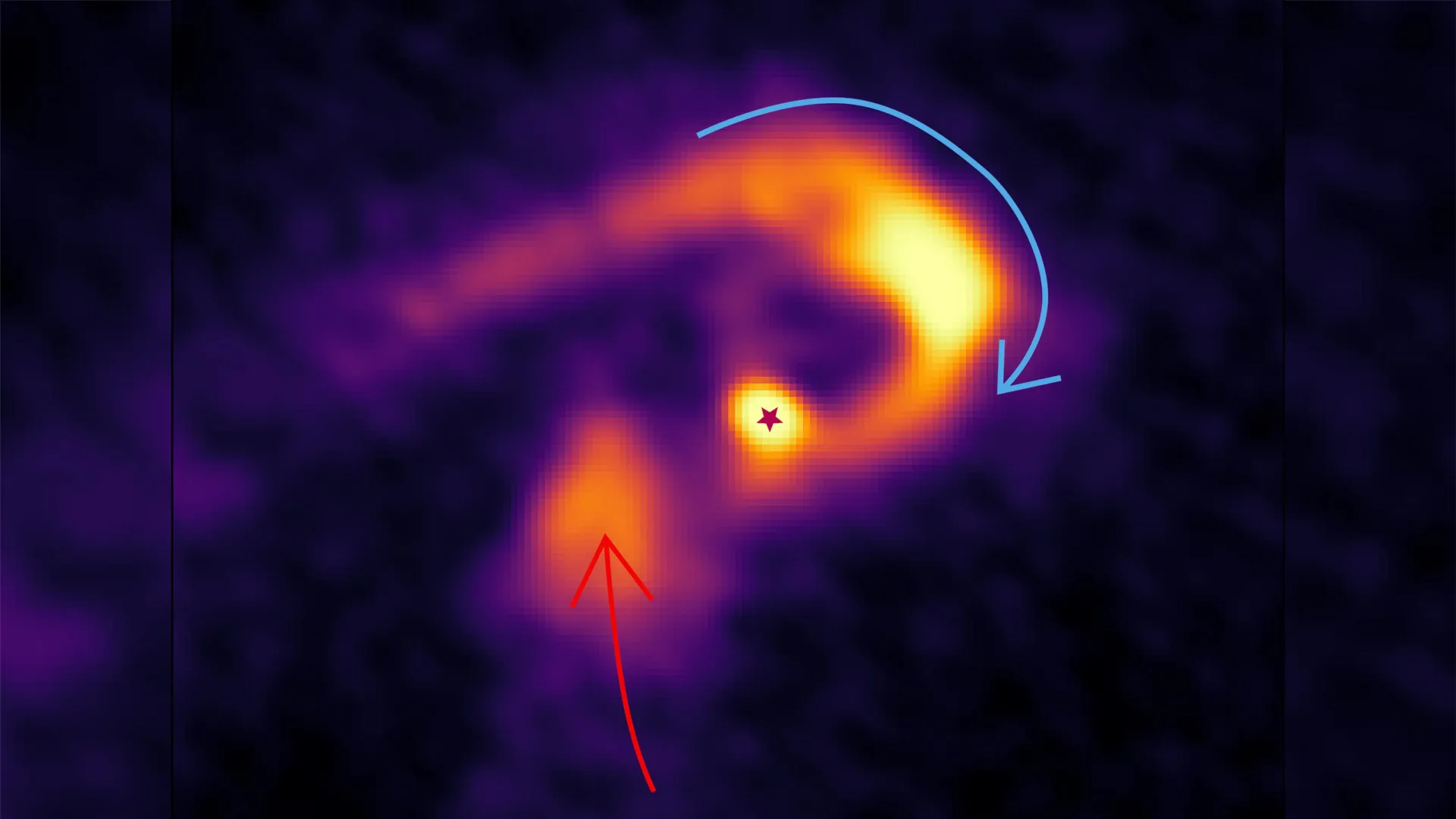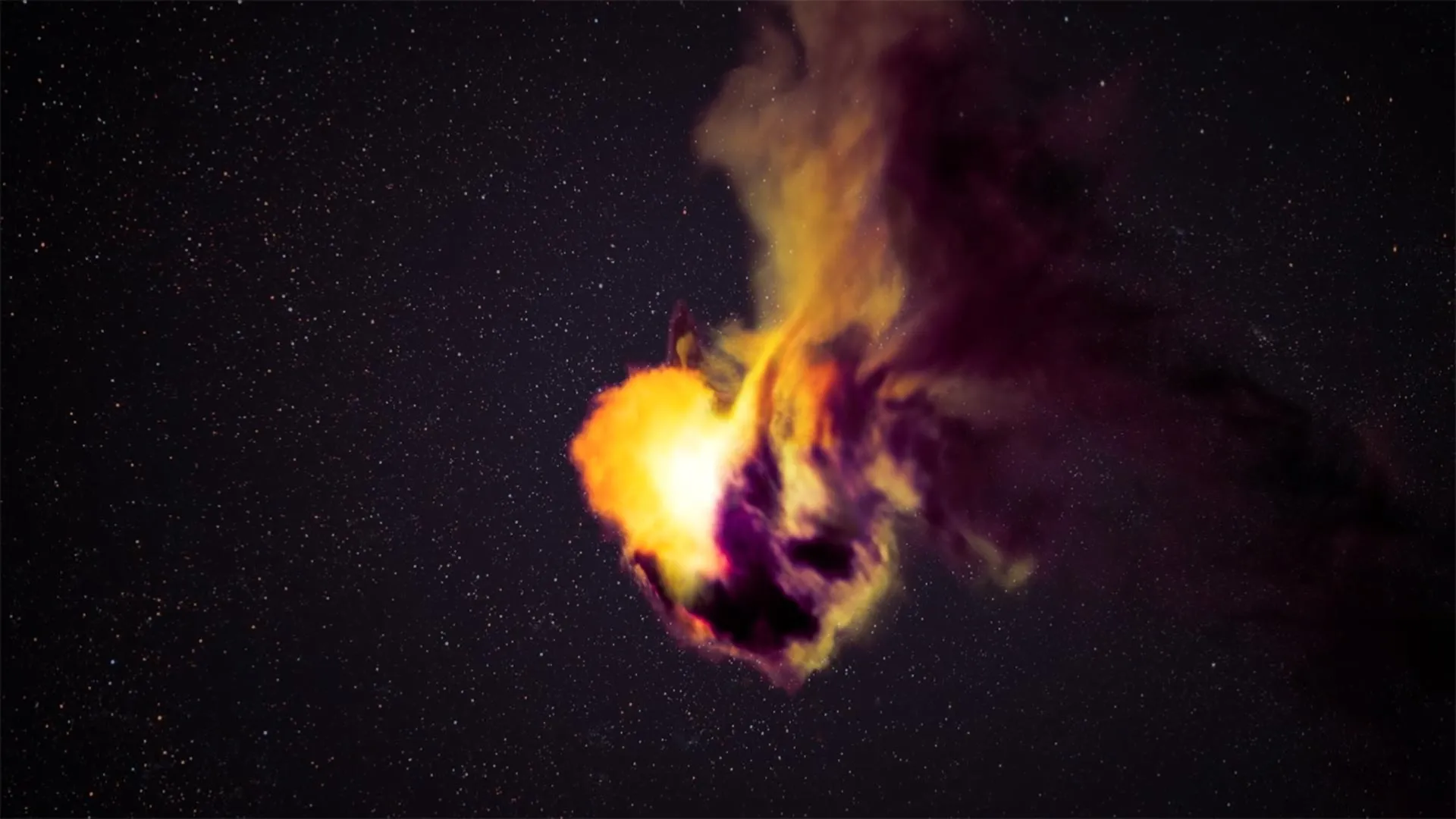Now Reading: Unveiling Cosmic Highways: How Massive Stars Are Fueled
-
01
Unveiling Cosmic Highways: How Massive Stars Are Fueled
Unveiling Cosmic Highways: How Massive Stars Are Fueled

Swift Summary
- High-mass stars (with masses over eight times that of the sun) form swiftly despite losing mass during formation due to stellar wind and radiation, a phenomenon termed “feedback.”
- Researchers from Kyoto University and the University of Tokyo identified gas streamers-flows of matter spanning over 1,000 astronomical units-that feed young stars by acting as “massive gas highways.”
- Using the Atacama Large Millimeter/submillimeter Array (ALMA) telescope in Chile, they observed a young star being fed by two streamers.
- One streamer connected to the central region exhibited rotation and infall behavior, delivering enough matter to counteract feedback effects from the star’s formation.
- Contrary to expectations of large accretion disks around such stars, researchers discovered either extremely small disks or no disk at all within thes regions.
- Future research will focus on examining other star-forming areas for similar streamer-fed systems and analyzing gas near massive stars.
Indian Opinion Analysis
The findings about high-mass stars offer groundbreaking insights into stellar evolution processes. While this revelation is rooted outside India’s geographical boundaries, its implications are global-inspiring Indian astrophysical research institutions like ISRO or ARIES to explore similar phenomena closer home. Understanding how massive celestial bodies accumulate matter could fuel advancements in space exploration technology.
Furthermore, given India’s ambitions in astronomy-highlighted by recent developments including satellite launches for space observations-adopting tools like ALMA might encourage collaborative international endeavors. This discovery reaffirms humanity’s continuous journey toward unraveling cosmic mysteries beyond planetary confines while offering an chance for India’s growing role in cutting-edge scientific exploration.

























